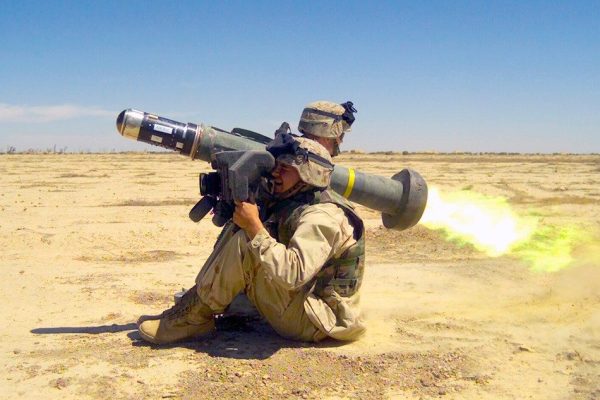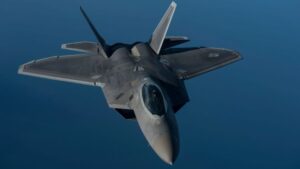This article first appeared on Warrior Maven, a Military Content Group website.
Heavy armored formations and mechanized units engineered for dispersed yet “linear” attacks to penetrate and hold enemy territory are not likely to disappear anytime soon as a critical element of modern Combined Army Maneuver, yet there is little question that the warfare in Ukraine is re-defining certain key ground-war tactics in favor of lightweight, de-centralized, agile and ground-fired anti-tank weapons used by dispersed, dismounted forces and fast, light tactical vehicles. When combined with precise overhead surveillance, unmanned systems and some measure of effective networking, Ukrainians armed with shoulder-fired anti-armor weapons continue to exact a devastating toll upon Russian assault platforms.
Certainly the world has observed and noted the sheer tenacity, resolve and tactical proficiency with which Ukrainians have defended their country, some of Ukraine‘s success is also likely due to the technological maturation of the weapons themselves in terms of longer-range, more precise sensing, high-fidelity targeting and enhanced munitions and warheads. This is the case for the Javelin and Carl Gustaf as well as other anti-armor weapons. There is also a significant tactical element of this, as Ukrainians have employed ambush-style, surprise hit-and-run tactics using terrain, urban areas and crosspoints to destroying approaching Russian armor.
This is also quite likely while the Marine Corps Force Design 2030 favors manned-unmanned teaming and the employment of highly-lethal yet expeditionary, mobile and deployable anti-armor weapons and platforms. Of course the Corps will keep am impactful number of tanks in its arsenal, technological advances in networking, unmanned systems and the ability of dispersed or dismounted forces to massive increase lethality against armored formations due to breakthroughs with sensing, explosives and ground-fired targeting. This is why the Corps document favors a greater use of easy to deploy high-speed tactical vehicles armed with extremely precise, lethal and explosive anti-armor weapons. A faster-moving, more dispersed force is not only harder for an enemy armored vehicles to target, but also able to expand the target envelope for attacking forces in terms of angle, speed and maneuver.
Anti-Armor weapons – Carl Gustaf
The war in Ukraine has shone a spotlight on anti-armor weapons and the extent to which they can cripple, slow down, and destroy armored formations in war.
When used with tactical proficiency and enabled by modern upgrades, cutting-edge anti-armor weapons have influenced and even redefined elements of modern warfare. For instance, Ukraine has been firing shoulder-launched anti-armor rockets, the same model urgently delivered to Afghanistan 10 years ago, called the Carl Gustaf.
The Multi-Role, Anti-Armor Anti-Personnel armament is a mobile direct-fire weapon for dismounted troops, intended to destroy light enemy structures and vehicles, dismounted groups of enemy fighters, and other key targets such as small buildings.
The Carl Gustaf was initially delivered in response to an Operational Needs Statement requesting a direct-fire weapon, states a post on the Army site from 2012.
The concept is to give dismounted units the mobile ability to target and destroy enemy vehicles or troop concentrations with high explosive rounds capable of both airburst and mechanical time fuses to tailor and maximize lethality as needed.
Often fired using a laser rangefinder, airburst rounds can be programmed to explode at a specific distance in close proximity to a specific identified target.
Carl Gustaf rounds can be particularly impactful when attacking an enemy fighter in defilade, meaning a protected position, where the operators are unable to be targeted.
The weapon, which is manufactured by Saab, has been used by U.S. Army Rangers, Navy SEALs, and Special Forces for many years.
Several Carl Gustaf units were initially sent to Afghanistan years ago as part of a limited operational assessment.
The Army purchased the weapon by joining with U.S. Special Operations Command in a combined buy from Saab.
The anti-armor, anti-personnel, shoulder-fired multi-role weapon is 42 inches long, weighs 21 pounds, and can fire up to six rounds per minute, Saab North America developers explained when the weapon was first released.
Saab weapons developers have said the unguided munition uses thermal sights at the correct range to pinpoint targets by radio frequency (RF) or thermal signature.
Added to the high-explosive rounds are dual-purpose rounds, illumination rounds, flechette rounds, smoke rounds, and enhanced anti-armor rounds.
The Carl Gustaf can fire the anti-armor high explosive round, which can be set to detonate upon impact or explode on “delay” after penetrating the target.
With a two-man crew including a gunner and a loader, the Carl Gustaf can fire as many as six rounds a minute to inflict damage onto a target.
The weapon seems to be a useful complement to the Javelin anti-tank missile, which has been upgraded with new sights, targeting on-the-move technology, and range capacity.
Although the rounds fired by the Carl Gustaf are unguided, apart from line-of-sight targeting available through thermal sights, it certainly seems conceivable that newer kinds of target acquisition are likely to appear quickly.
Javelins Decimate Russian Armor
The Javelin anti-tank weapon, which has arrived in Ukraine in large numbers from the U.S. and NATO allies, has been a large element attack for the Ukrainian army.
In recent years, Raytheon and Lockheed have upgraded the Javelin’s targeting, range, and lethality with software upgrades and innovations of great consequence. Raytheon has engineered a new Lightweight Command Launch Unit (CLU) over the last several years that actually doubles the range.
Several years ago, Army officials with the Javelin Product Office, Program Executive Office Missiles & Space told Warrior Maven that the new Lightweight CLU reduces weight by 30 percent, and Raytheon developers said the CLU has a constant zoom targeting technology able to pinpoint targets from much greater distances.
Other Javelin upgrades include the introduction of “fast-lock” targeting technology, which improves the ability to lock on and destroy a moving target. As for explosives, Raytheon and the Army have also been developing new warheads for the Javelin.
Its not clear which variants of the Javelin Ukraine is receiving, however it is likely they are receiving some with these kinds of upgrades given that they have existed now for several years. This would be a key question to find out, because while early variants of the Javelin and Carl Gustaf have proven extremely successful, it certainly seems possible that Ukrainians are firing some “upgraded” variants of these weapons.
Connection to WWII Anti-Tanks Attacks
These innovations certainly improve the lethality of anti-armor weapons used by dismounted infantry, which have been effective in armored warfare as far back as WWII, according to a 1985 report from Fort Leavenworth’s U.S. Army Command and General Staff College, Combat Studies Institute.
The challenges of facing the fast-advancing offensive tactics used by Nazi Panzer tanks made defensive postures extremely difficult and complicated. During these years, a report by Dr. Christopher Gabel maintains, Allied forces discovered the merits of using dismounted infantry for “offensive” counterattacks against the approaching tanks. In essence – meet “offense with offense.”
“The counterattack has long been termed the soul of the defense. Defensive action against a tank attack calls for a counterattack in the same general manner as against the older forms of attack … There is no reason why anti-tank guns, supported by infantry, cannot attack tanks just as infantry, supported by artillery, has attacked infantry in the past,“ the report, “Seek, Strike and Destroy: U.S. Army Tank Destroyer Doctrine in World War II,” states. (Dr. Christopher Gabel).
NLAW uses Top-Down Attacks to Destroy Tanks
One of the lesser recognized yet equally impactful anti-armor weapons being used in the Russia-Ukraine war is called NLAW, a lightweight, portable missile used by dismounted infantry.
The weapon was made by Saab Bofors Dynamics as a joint UK-Swedish venture intended to bring new weapons support to infantry on the move in combat.
As a portable, lightweight weapon, the NLAW is an optimal weapon to be used in an ambush by maneuvering soldiers as well as hit-and-run attacks on light armored vehicles, buildings, or concentrated groups of enemy fighters.
The weapon is optimally suited for top-down attacks as it may not fully penetrate heavy armor but is likely to be extremely lethal if used to attack more vulnerable areas of an enemy vehicle from an elevated position. It has night vision for targeting, and both a point-of-contact and proximity fuse detonation. The NLAW fires a standard HEAT or “high-explosive-anti-tank” round.
Available specs say the NLAW is a Line-of-Sight weapon, meaning it is guided by direct human targeting within line of sight, using a soft-launch system. It is a one-shot disposable weapon that can be discarded after use, but as a highly transportable weapon, the NLAW has proven effective against Russian vehicles in Ukraine.
NLAW & Javelin
The NLAW has been used alongside the similar and well-known Javelin anti-tank missile, which has also proven effective in Ukraine. While the Javelin is a soldier-portable weapon as well, it is longer-range and potentially more lethal than the NLAW.
The NLAW is a close-in-fight weapon, even more than a Javelin as it has a shorter range of roughly 1,000 meters. The NLAW is a weapon that infantry can use against vehicles in any exchange of fire or combat encounters with a larger mechanized force.
This kind of weapon has been critical for Ukrainians as part of the ongoing push to stop Russia’s invasion and continue to reclaim territory. The United Kingdom reportedly sent 2,000 NLAWs to Ukraine in March of 2022, and the weapons have reportedly been extremely successful against Russian vehicles. The NLAW’s HEAT warhead is likely quite similar to the Javelin, yet with a clearly shorter range and without the advanced optics, targeting, and range now built into the Javelin.
Ukrainians have been using elevated positions to attack tanks where they are most vulnerable. Multiple reports and open-source data on the war suggest Ukrainians have destroyed at least 2,000 Russian tanks.



